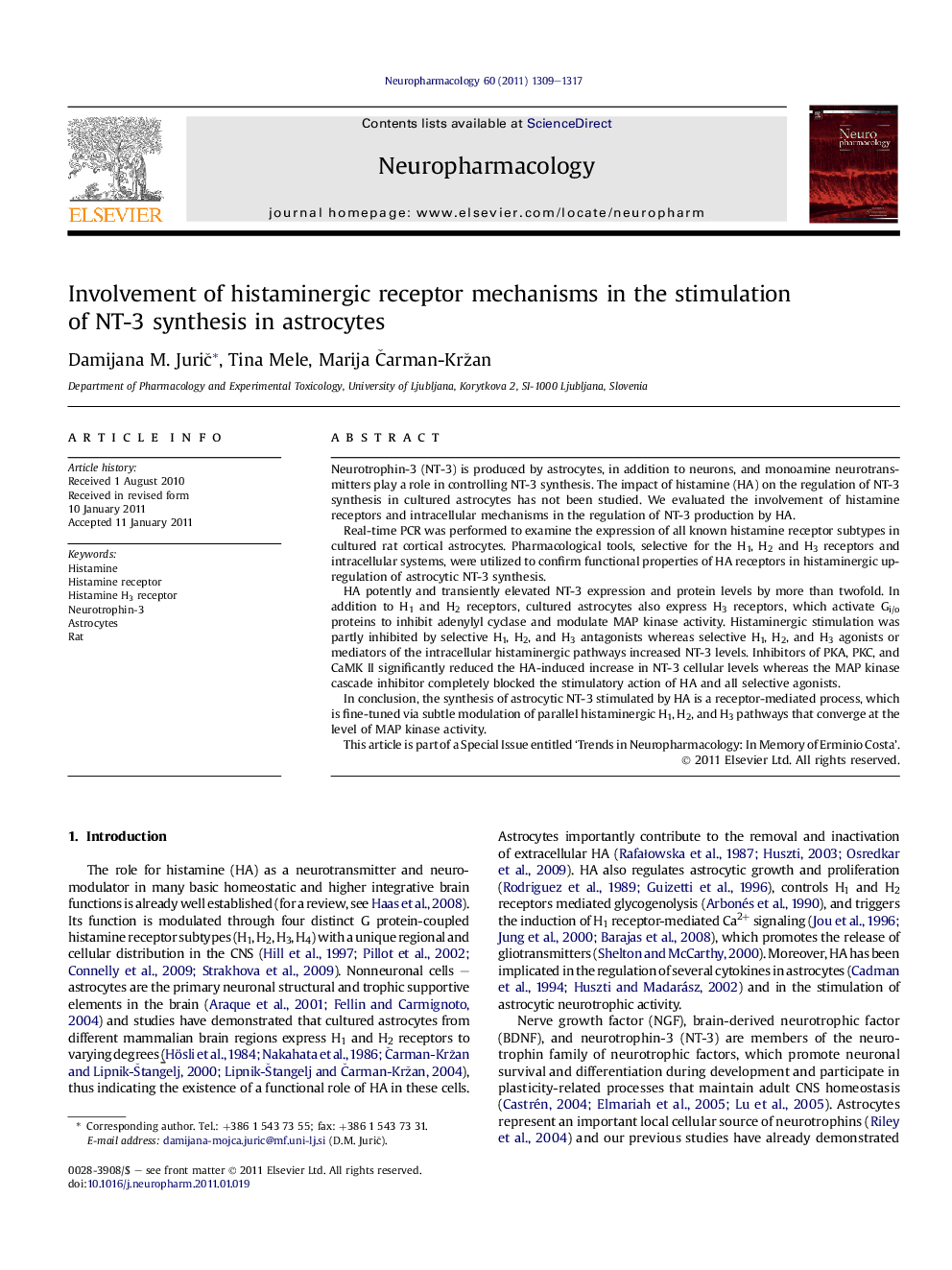| Article ID | Journal | Published Year | Pages | File Type |
|---|---|---|---|---|
| 2493720 | Neuropharmacology | 2011 | 9 Pages |
Neurotrophin-3 (NT-3) is produced by astrocytes, in addition to neurons, and monoamine neurotransmitters play a role in controlling NT-3 synthesis. The impact of histamine (HA) on the regulation of NT-3 synthesis in cultured astrocytes has not been studied. We evaluated the involvement of histamine receptors and intracellular mechanisms in the regulation of NT-3 production by HA.Real-time PCR was performed to examine the expression of all known histamine receptor subtypes in cultured rat cortical astrocytes. Pharmacological tools, selective for the H1, H2 and H3 receptors and intracellular systems, were utilized to confirm functional properties of HA receptors in histaminergic up-regulation of astrocytic NT-3 synthesis.HA potently and transiently elevated NT-3 expression and protein levels by more than twofold. In addition to H1 and H2 receptors, cultured astrocytes also express H3 receptors, which activate Gi/o proteins to inhibit adenylyl cyclase and modulate MAP kinase activity. Histaminergic stimulation was partly inhibited by selective H1, H2, and H3 antagonists whereas selective H1, H2, and H3 agonists or mediators of the intracellular histaminergic pathways increased NT-3 levels. Inhibitors of PKA, PKC, and CaMK II significantly reduced the HA-induced increase in NT-3 cellular levels whereas the MAP kinase cascade inhibitor completely blocked the stimulatory action of HA and all selective agonists.In conclusion, the synthesis of astrocytic NT-3 stimulated by HA is a receptor-mediated process, which is fine-tuned via subtle modulation of parallel histaminergic H1, H2, and H3 pathways that converge at the level of MAP kinase activity.This article is part of a Special Issue entitled ‘Trends in Neuropharmacology: In Memory of Erminio Costa’.
► We evaluated the functional interplay of HA and its receptors in NT-3 synthesis. ► HA potently and transiently increases astrocytic NT-3 expression and protein levels. ► In addition to H1 and H2 receptors, cultured astrocytes express H3 receptors. ► H3 receptors via Gi/o proteins inhibit adenylyl cyclase and modulate MAPK activity. ► Parallel histaminergic pathways modulate HA-induced NT-3 synthesis in astrocytes.
